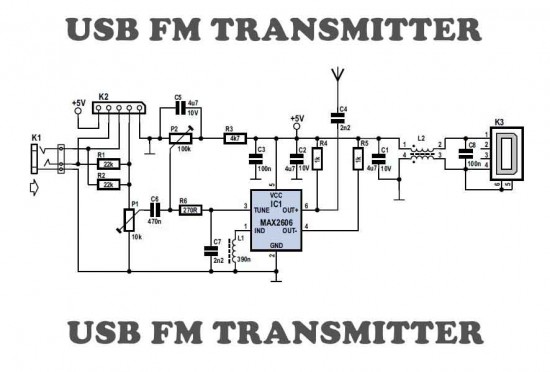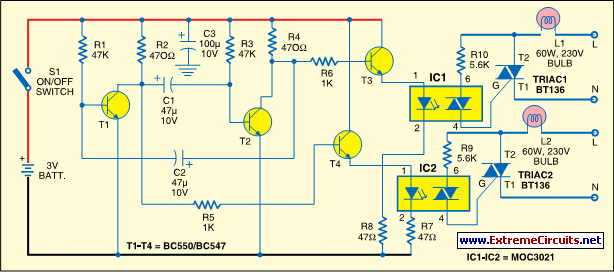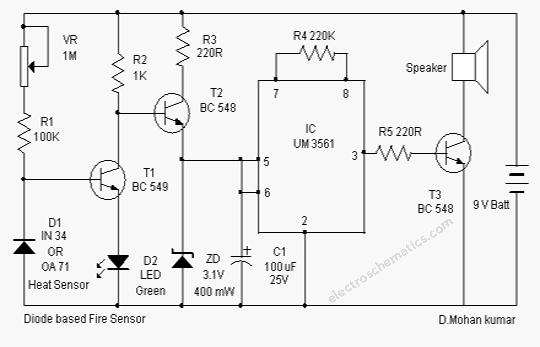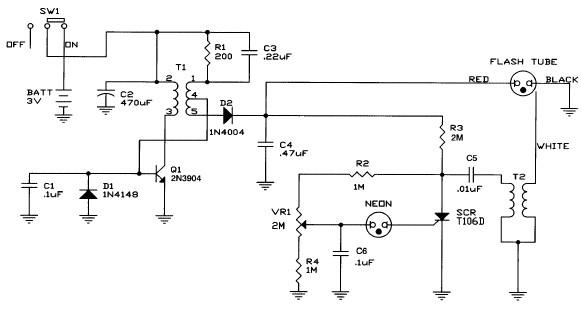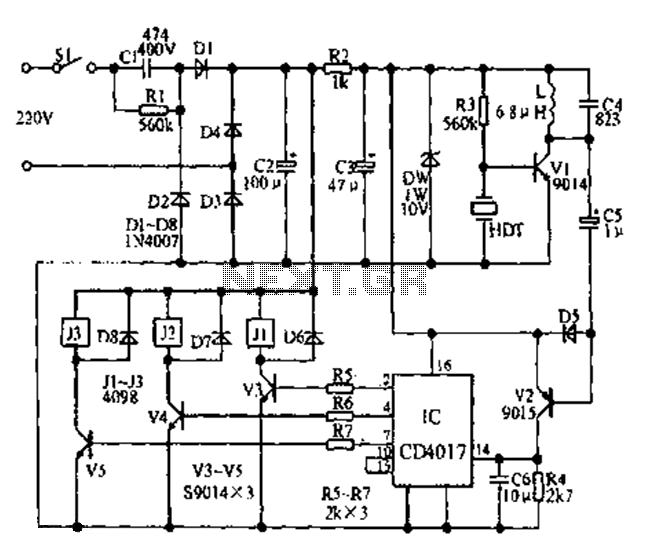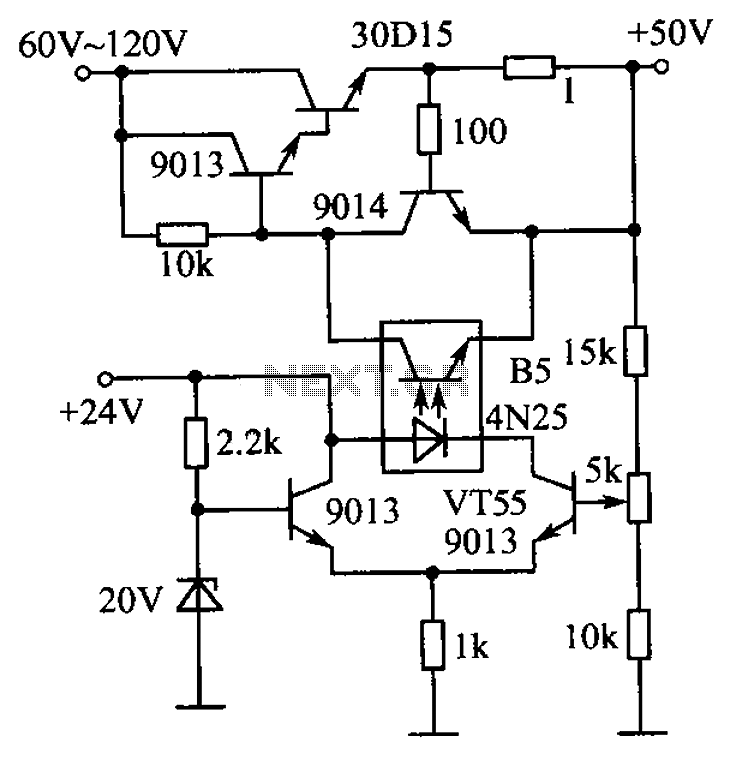
Relay Circuit Detects Light Change
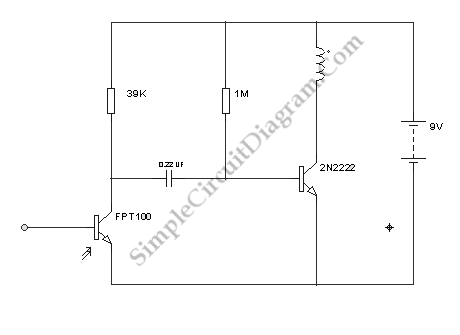
Configured with capacitive coupling by inserting a small capacitor between the phototransistor and the bipolar transistor, this relay circuit will respond only to rapid changes.
This relay circuit utilizes capacitive coupling to enhance its responsiveness to fast signal changes. The configuration involves a phototransistor that detects light signals and a bipolar junction transistor (BJT) that acts as a switching element. The small capacitor placed between these two components serves to block any DC component of the signal while allowing AC signals, particularly those with rapid transitions, to pass through.
When light falls on the phototransistor, it generates a small current proportional to the intensity of the light. This current charges the capacitor, which in turn creates a voltage across the base of the bipolar transistor. The rapid changes in the voltage due to the charging and discharging of the capacitor allow the circuit to respond quickly to variations in light intensity.
In practical applications, this type of relay circuit can be employed in systems where it is essential to detect quick changes in light levels, such as in optical sensors, light-based alarms, or automation systems where light signals trigger actions. The design ensures that the relay only activates in response to significant fluctuations, thereby reducing the likelihood of false triggering caused by steady-state light conditions.
The choice of capacitor value is critical; it must be selected to balance the response time and the sensitivity of the circuit. A smaller capacitor will allow for quicker response times but may be less sensitive to slower changes, while a larger capacitor will enhance sensitivity but may introduce delays in response. The overall performance of the circuit can also be influenced by the characteristics of the phototransistor and the bipolar transistor used, including their gain and switching speeds.
In summary, this relay circuit effectively combines capacitive coupling with phototransistor and bipolar transistor components to create a responsive system capable of detecting rapid changes in light conditions, making it suitable for a variety of electronic applications.Configured with capacitive coupling (by inserting a small cap between photo-transistor and bipolar transistor), this relay circuit will respond only to rapid.. 🔗 External reference
This relay circuit utilizes capacitive coupling to enhance its responsiveness to fast signal changes. The configuration involves a phototransistor that detects light signals and a bipolar junction transistor (BJT) that acts as a switching element. The small capacitor placed between these two components serves to block any DC component of the signal while allowing AC signals, particularly those with rapid transitions, to pass through.
When light falls on the phototransistor, it generates a small current proportional to the intensity of the light. This current charges the capacitor, which in turn creates a voltage across the base of the bipolar transistor. The rapid changes in the voltage due to the charging and discharging of the capacitor allow the circuit to respond quickly to variations in light intensity.
In practical applications, this type of relay circuit can be employed in systems where it is essential to detect quick changes in light levels, such as in optical sensors, light-based alarms, or automation systems where light signals trigger actions. The design ensures that the relay only activates in response to significant fluctuations, thereby reducing the likelihood of false triggering caused by steady-state light conditions.
The choice of capacitor value is critical; it must be selected to balance the response time and the sensitivity of the circuit. A smaller capacitor will allow for quicker response times but may be less sensitive to slower changes, while a larger capacitor will enhance sensitivity but may introduce delays in response. The overall performance of the circuit can also be influenced by the characteristics of the phototransistor and the bipolar transistor used, including their gain and switching speeds.
In summary, this relay circuit effectively combines capacitive coupling with phototransistor and bipolar transistor components to create a responsive system capable of detecting rapid changes in light conditions, making it suitable for a variety of electronic applications.Configured with capacitive coupling (by inserting a small cap between photo-transistor and bipolar transistor), this relay circuit will respond only to rapid.. 🔗 External reference
Warning: include(partials/cookie-banner.php): Failed to open stream: Permission denied in /var/www/html/nextgr/view-circuit.php on line 713
Warning: include(): Failed opening 'partials/cookie-banner.php' for inclusion (include_path='.:/usr/share/php') in /var/www/html/nextgr/view-circuit.php on line 713
